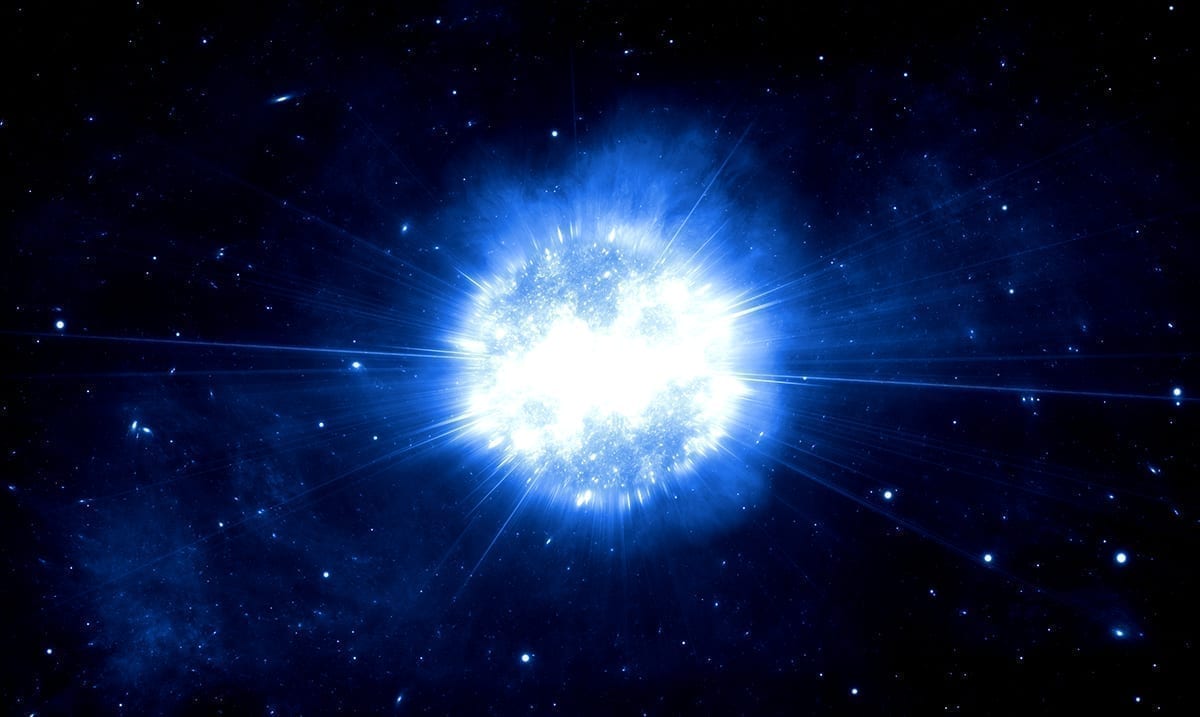While we know there was a devastating extinction event back in the Devonian Period, understanding what happened is harder than most might assume. You see, the things that have happened in the past are not easy to figure out.
During this extinction event according to Space.com, about 75 percent of all species on the planet died out. This while almost 360 million years ago is something researchers have been trying to understand for quite some time now. That being said, it seems we may be closer to understanding it, more now than ever.
Research published by PNAS under the title “Supernova triggers for end-Devonian extinctions” seems to suggest that this extinction could have been triggered by a supernova and it’s abstract goes as follows:
The Late Devonian was a protracted period of low speciation resulting in biodiversity decline, culminating in extinction events near the Devonian–Carboniferous boundary. Recent evidence indicates that the final extinction event may have coincided with a dramatic drop in stratospheric ozone, possibly due to a global temperature rise. Here we study an alternative possible cause for the postulated ozone drop: a nearby supernova explosion that could inflict damage by accelerating cosmic rays that can deliver ionizing radiation for up to ∼100∼100 ky. We, therefore, propose that the end-Devonian extinctions were triggered by supernova explosions at ∼20 pc∼20 pc, somewhat beyond the “kill distance” that would have precipitated a full mass extinction. Such nearby supernovae are likely due to core collapses of massive stars; these are concentrated in the thin Galactic disk where the Sun resides. Detecting either of the long-lived radioisotopes Sm146Sm146 or Pu244Pu244 in one or more end-Devonian extinction strata would confirm a supernova origin, point to the core-collapse explosion of a massive star, and probe supernova nucleosynthesis. Other possible tests of the supernova hypothesis are discussed.
While this is not set in stone, it is a good hypothesis to explore, that’s for sure. According to this research, it seems this extinction could have been somehow triggered by a supernova roughly 65 light-years away during that period. This event could have caused the ozone to deplete and from there, things would domino into the mass extinction we’ve been trying so hard to understand for so long.
Illinois News Bureau wrote as follows on their website covering this:
The team concentrated on Devonian-Carboniferous boundary because those rocks contain hundreds of thousands of generations of plant spores that appear to be sunburnt by ultraviolet light – evidence of a long-lasting ozone-depletion event.
“Earth-based catastrophes such as large-scale volcanism and global warming can destroy the ozone layer, too, but evidence for those is inconclusive for the time interval in question,” Fields said. “Instead, we propose that one or more supernova explosions, about 65 light-years away from Earth, could have been responsible for the protracted loss of ozone.”
“To put this into perspective, one of the closest supernova threats today is from the star Betelgeuse, which is over 600 light-years away and well outside of the kill distance of 25 light-years,” said graduate student and study co-author Adrienne Ertel.
The team explored other astrophysical causes for ozone depletion, such as meteorite impacts, solar eruptions, and gamma-ray bursts. “But these events end quickly and are unlikely to cause the long-lasting ozone depletion that happened at the end of the Devonian period,” said graduate student and study co-author Jesse Miller.
A supernova, on the other hand, delivers a one-two punch, the researchers said. The explosion immediately bathes Earth with damaging UV, X-rays, and gamma rays. Later, the blast of supernova debris slams into the solar system, subjecting the planet to long-lived irradiation from cosmic rays accelerated by the supernova. The damage to Earth and its ozone layer can last for up to 100,000 years.
However, fossil evidence indicates a 300,000-year decline in biodiversity leading up to the Devonian-Carboniferous mass extinction, suggesting the possibility of multiple catastrophes, maybe even multiple supernovae explosions. “This is entirely possible,” Miller said. “Massive stars usually occur in clusters with other massive stars, and other supernovae are likely to occur soon after the first explosion.”
While it might not sound like much to some, this is a step towards something huge if things play out properly. Sure, we know exploding stars are powerful but are they powerful enough to trigger something like this? Well, it seems quite possible the more you dive into it.
What do you think about all of this? I for one am quite intrigued. Things of this nature are always truly fascinating.

